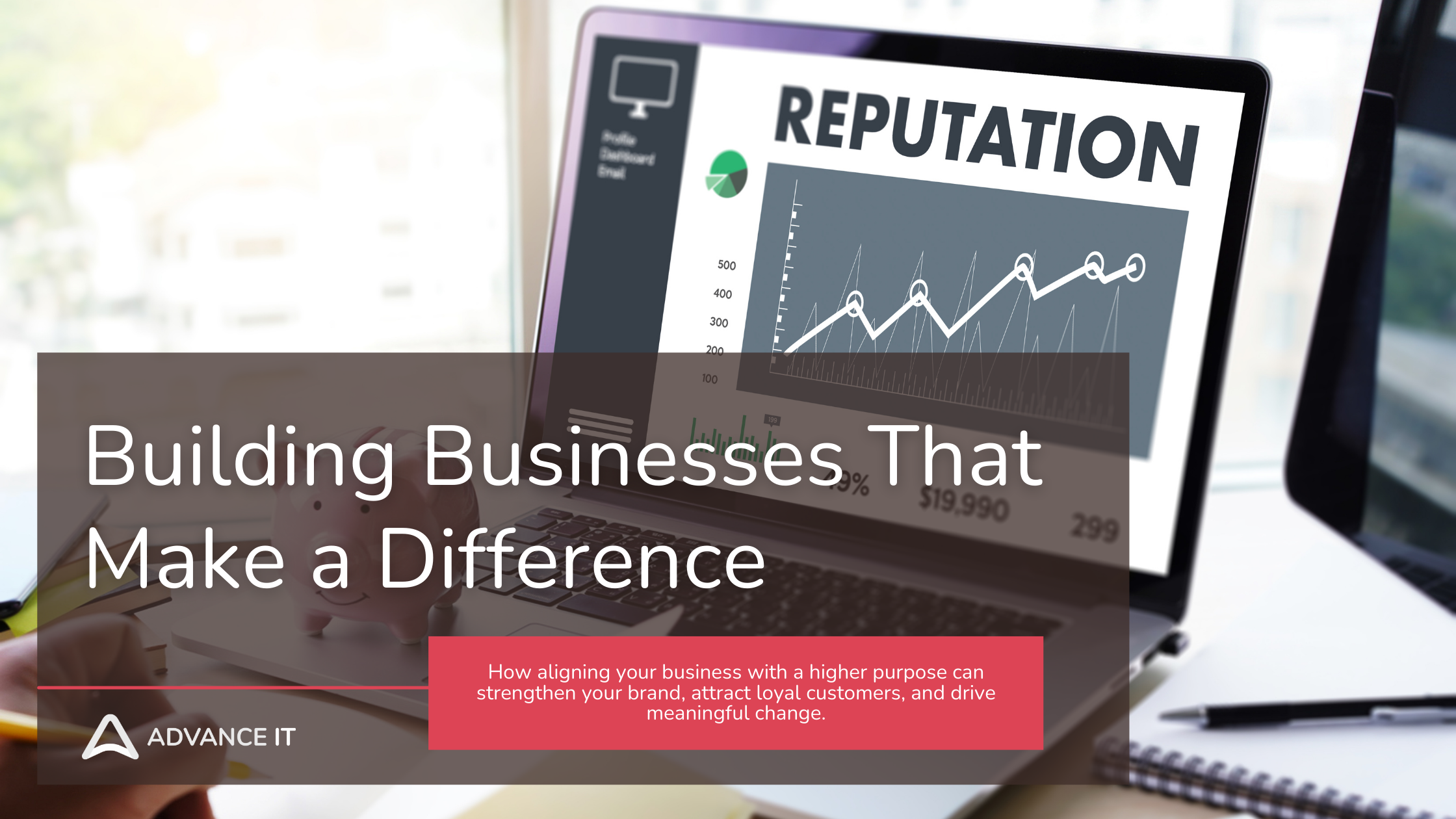Building Businesses That Make a Difference
In an era where consumers and employees increasingly prioritize purpose over profits, building a purpose-driven organization has become essential for long-term success. Businesses that focus on creating social impact alongside profitability are not only making a difference in the world but are also gaining competitive advantages in brand loyalty, employee retention, and sustainable growth.
This blog explores how aligning your business with a higher purpose can strengthen your brand, attract loyal customers, and drive meaningful change.
Why Purpose-Driven Businesses Matter
1. Changing Consumer Expectations
Today’s consumers are more conscious than ever about the social and environmental impact of their purchases. According to a study by IBM and the National Retail Federation, 70% of consumers prefer brands that align with their values. Additionally, 57% are willing to change their shopping habits to reduce environmental impact.
Example: Outdoor apparel company Patagonia has built its brand on sustainability, pledging 1% of sales to environmental causes and encouraging customers to repair, rather than replace, their products. This commitment has fostered strong customer loyalty and brand advocacy.
2. Employee Attraction and Retention
Employees want to work for companies that stand for something beyond profit. A Deloitte Global Millennial Survey found that 42% of millennials and 49% of Gen Z prioritize working for employers who positively impact society.
Fact: Purpose-driven companies report 40% higher employee retention rates, as per a study by LinkedIn.
Example: Tech giant Salesforce integrates philanthropy into its operations through its 1-1-1 model: 1% of equity, 1% of product, and 1% of employee time are donated to charitable causes. This approach has positioned Salesforce as an employer of choice.
Steps to Build a Purpose-Driven Business
1. Define Your Higher Purpose
Your business purpose should reflect a commitment to solving real-world problems, whether social, environmental, or cultural.
Actionable Steps:
Conduct stakeholder interviews (customers, employees, and investors) to understand the issues that matter most to them.
Align your purpose with your business's core competencies.
Create a mission statement that succinctly communicates your purpose.
Example: Ben & Jerry’s embeds social justice into its mission by advocating for causes like climate change, racial equity, and LGBTQ+ rights while producing high-quality ice cream.
2. Embed Purpose Into Your Business Strategy
A strong purpose should be integrated into every aspect of your business, from product development to marketing.
How to Do It:
Product Design: Use sustainable materials or ethical supply chains.
Marketing: Highlight your purpose-driven initiatives in campaigns.
Community Engagement: Partner with nonprofits or organize events that align with your mission.
Example: TOMS Shoes pioneered the “One for One” model, donating a pair of shoes for every pair sold. The company has since expanded its impact to include clean water and mental health initiatives, reinforcing its purpose-driven mission.
3. Measure and Communicate Impact
Transparency is crucial for building trust. Regularly measure and share the social and environmental impact of your initiatives.
Key Metrics to Track:
Number of beneficiaries impacted (e.g., meals provided, trees planted).
Reduction in carbon footprint or waste.
Funds donated or raised for charitable causes.
Tools: Use frameworks like the B Impact Assessment or Global Reporting Initiative (GRI) to evaluate and report on your impact.
Tip: Share progress through annual impact reports, blogs, or social media updates.
Example: Unilever’s Sustainable Living Plan includes measurable goals, such as reducing greenhouse gas emissions and improving health and well-being for 1 billion people, which are shared transparently with stakeholders.
4. Empower Employees and Customers
Purpose-driven businesses succeed when they engage their employees and customers in meaningful ways.
For Employees:
Introduce volunteer programs that allow employees to contribute to causes aligned with the company’s mission.
Recognize and reward employees who champion sustainability or social impact initiatives.
For Customers:
Offer programs that let customers participate in your purpose, such as donation matching or recycling programs.
Example: Coffee chain Starbucks launched its Greener Stores Initiative, involving employees and customers in reducing the company’s environmental footprint. Customers are encouraged to bring reusable cups, and employees participate in sustainability projects.
Benefits of Building a Purpose-Driven Business
1. Stronger Brand Loyalty
Consumers are more likely to support brands that align with their values. A Harvard Business Review study found that brands with a strong sense of purpose grow at a rate of 30% or more, compared to 12% for those without.
2. Access to New Markets
Purpose-driven initiatives can help businesses tap into new markets and customer segments that prioritize ethical and sustainable practices.
3. Increased Investor Confidence
Investors are increasingly focused on Environmental, Social, and Governance (ESG) metrics. Companies that demonstrate strong social impact initiatives often attract more funding and investor interest.
Example: Companies in the MSCI ESG Leaders Index outperform their peers financially, as they are perceived to be better prepared for long-term sustainability challenges.
Conclusion
Building a business that makes a difference is not just about fulfilling a moral obligation—it’s a strategic advantage in today’s purpose-driven economy. By aligning with a higher purpose, embedding it into your operations, and transparently communicating your impact, your business can attract loyal customers, motivated employees, and committed investors.
As the success stories of Patagonia, TOMS, and Salesforce show, purpose-driven businesses are not only thriving financially but also creating meaningful change. The time to embrace purpose as a core pillar of your business is now.





